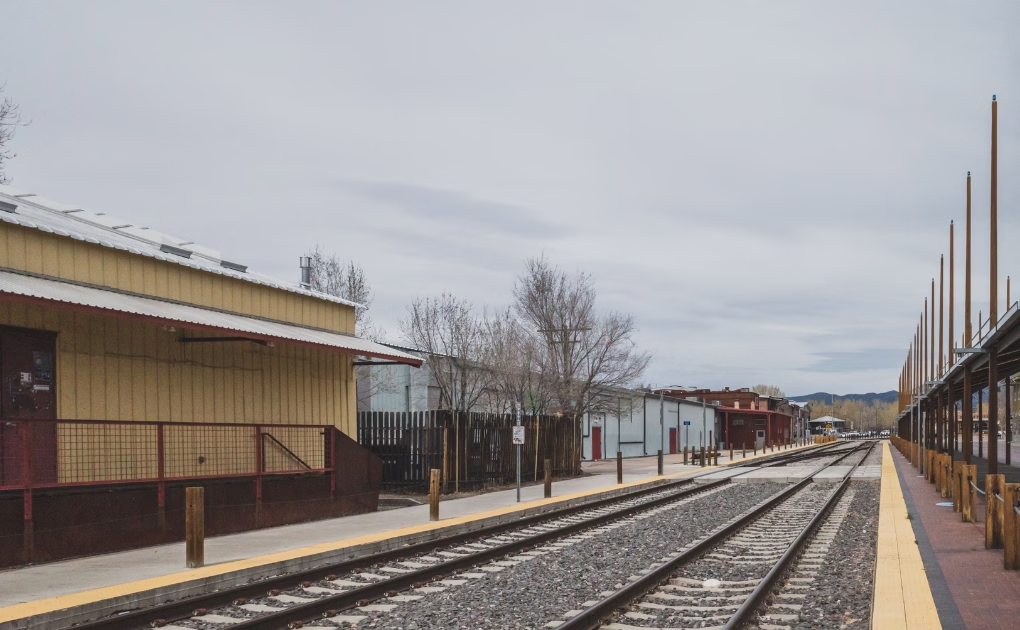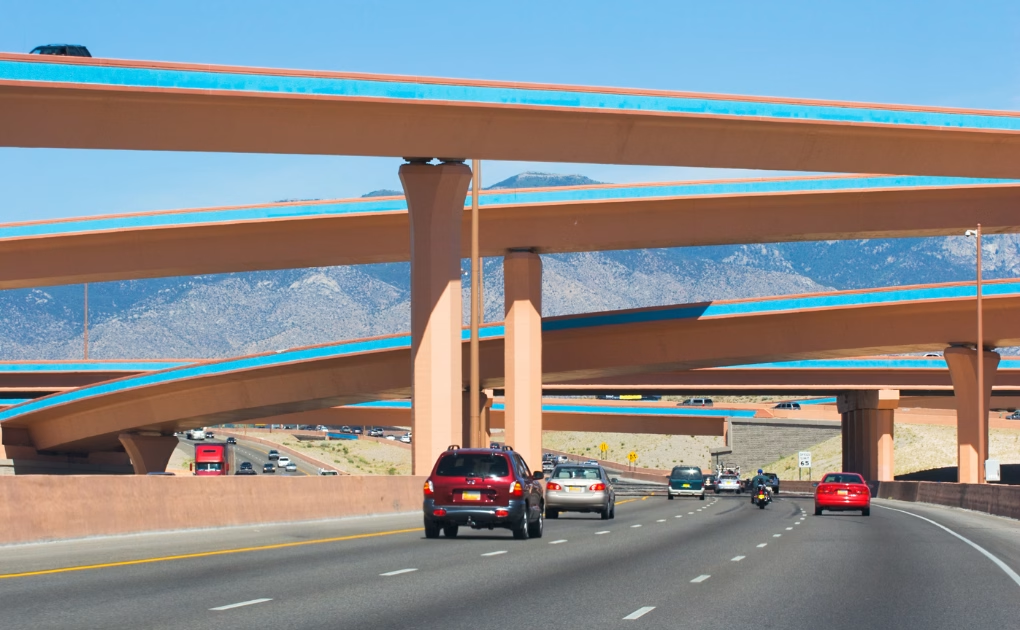How Railroads Defined Albuquerque’s Cultural and Economic Identity
Imagine a time when trains were the lifeblood of a city. For Albuquerque, the railroad was more than transportation—it transformed a modest trading post into a thriving center of commerce and culture.
In the late 19th century, the railroad boosted Albuquerque’s economy, driving trade, attracting settlers, and shaping the city’s traditions, cuisine, and community. It also spurred architectural growth with depots, hotels, and businesses, cementing Albuquerque’s role as a regional hub.
In this blog, we’ll explore how the railroad reshaped Albuquerque’s economy, enriched its culture, and built the foundation of the city we know today.
Albuquerque Before the Railroad
Before trains echoed through the city, Albuquerque was a quiet trading post along the Rio Grande. During the Spanish and Mexican eras, it was a key stop on El Camino Real, a trade route linking Mexico to the American Southwest.
Merchants brought textiles, silver, and spices from Mexico, while furs, chili peppers, and piñon nuts traveled south. This route connected Albuquerque to New Mexico towns like Santa Fe, fostering cultural and economic exchange, though not enough to spark rapid growth.
Life centered on small-scale trade and agriculture. Farmers grew corn, wheat, and beans, while artisans made pottery, blankets, and leather goods for local use and trade.
The Old Town Plaza was the community hub—an adobe-lined square filled with shops, farmer stalls, and neighbors sharing news. The plaza’s church hosted festivals and religious events, serving as a spiritual and social center.
However, Albuquerque’s isolation limited growth. The town lacked infrastructure, and reaching larger markets was slow, with goods moving by wagon or horseback over rugged terrain. Unpredictable weather caused delays, keeping Albuquerque a small regional hub tied to agriculture and the occasional flow of goods along El Camino Real.
The Arrival of the Railroad: A Turning Point
In 1880, the first train pulled into Albuquerque, marking the beginning of a new era. The railroad connected Albuquerque to major cities and trade networks across the United States, bringing a wave of opportunities that transformed the town almost overnight.

The strategic location of Albuquerque made it a perfect stop along the Atchison, Topeka, and Santa Fe Railway. With its proximity to the Rio Grande and position between the East and West coasts, the city became a vital link in the country’s growing rail system.
This new connection brought goods, people, and ideas into Albuquerque, setting the stage for rapid development.
The Creation of New Town
One of the most immediate changes was the rise of “New Town.” While Old Town remained the cultural and historic center, New Town grew up around the railroad station, quickly becoming the city’s new commercial hub.
Streets filled with shops, warehouses, and businesses catering to rail travelers and locals alike. Hotels and restaurants popped up to serve passengers, and the city began expanding its infrastructure to accommodate its growing population. New Town represented a shift in Albuquerque’s identity, blending tradition with progress.
Economic Impact: Trade and Jobs Boom
The railroad wasn’t just about moving people—it was the engine that powered Albuquerque’s economic boom. Suddenly, goods could travel quickly and affordably, opening up new markets for local products and bringing in items that were once difficult to obtain.
Albuquerque became a central hub for trade, with goods flowing in from both coasts. The availability of new products lowered costs and improved the standard of living for many residents.
Beyond trade, the railroad created jobs, not only in construction and maintenance but also in industries like agriculture, mining, and manufacturing that thrived due to rail connectivity. Around the stations, hotels, cafes, warehouses, and small factories flourished, creating opportunities for workers and entrepreneurs alike.
The Growth of Supporting Industries
With the influx of goods and people, Albuquerque saw a surge in supporting businesses. Hotels welcomed weary travelers, while restaurants offered meals to passengers and workers. Warehouses stored goods destined for other markets, and new factories took advantage of the easier access to raw materials.
Social and Cultural Influence: Albuquerque Meets the World
The railroad didn’t just change Albuquerque’s economy, it brought the world to its doorstep. With trains came settlers from across the United States and immigrants from countries like Ireland, Germany, and China, all seeking opportunities in this growing city.
These newcomers brought their cultures, traditions, and cuisines, enriching Albuquerque’s social fabric.
The railroad also introduced new goods and ideas, shaping Albuquerque’s art, architecture, and identity. The blending of cultures created a unique Southwestern style that’s still evident today. From vibrant crafts to flavorful dishes, Albuquerque’s cultural exchange owes much to the diversity sparked by the railroad.
Cultural Diversity and Exchange
Albuquerque became a melting pot of traditions as people from different backgrounds arrived. Irish rail workers, Chinese laborers, and settlers from the Midwest all contributed to the city’s character. This diversity influenced everything from local festivals to the architecture of New Town, creating a community that was as vibrant as it was diverse.
The Decline of Railroads and Albuquerque’s Shift

As cars and planes became the dominant forms of transportation in the mid-20th century, the railroads began to lose their prominence. For Albuquerque, this shift marked a new chapter. While the city’s growth was no longer tied to the tracks, the foundations laid by the railroad allowed it to adapt and diversify.
Industries that once depended on rail travel evolved, and Albuquerque expanded its economy to include new sectors like aviation and technology. Despite the decline of railroads, their legacy remained in the city’s infrastructure and identity.
Lasting Impact of Railroads
Today, you can still see traces of Albuquerque’s railroad era. Historic buildings, neighborhoods, and even traditions have their roots in this transformative period. The railroad’s influence is woven into the fabric of the city, reminding residents and visitors of its pivotal role in shaping Albuquerque’s growth.
Albuquerque’s Modern Railroad Legacy
While the heyday of railroads may be over, their legacy lives on in Albuquerque. The New Mexico Rail Runner Express continues to connect the city to Santa Fe and beyond, keeping the spirit of rail travel alive. Historic sites, like the Albuquerque Rail Yards, serve as reminders of the city’s rich history and attract visitors eager to learn about its past.
Museums and community events celebrate Albuquerque’s railroad heritage, offering a glimpse into the era that shaped the city. Whether you’re riding the Rail Runner or exploring historic landmarks, the railroad’s impact is still a part of Albuquerque’s story.
Looking Back: Albuquerque’s Growth on the Rails
The railroad fueled Albuquerque’s transformation from a small trading post to a thriving urban center. It brought new opportunities, connected the city to the rest of the country, and introduced a mix of cultures that continue to define its identity.
The railroad’s legacy is more than just tracks and trains—it’s a story of growth, resilience, and innovation. Next time you’re in Albuquerque, take a moment to explore its historic railroad sites and experience a piece of the history that shaped this vibrant city.
